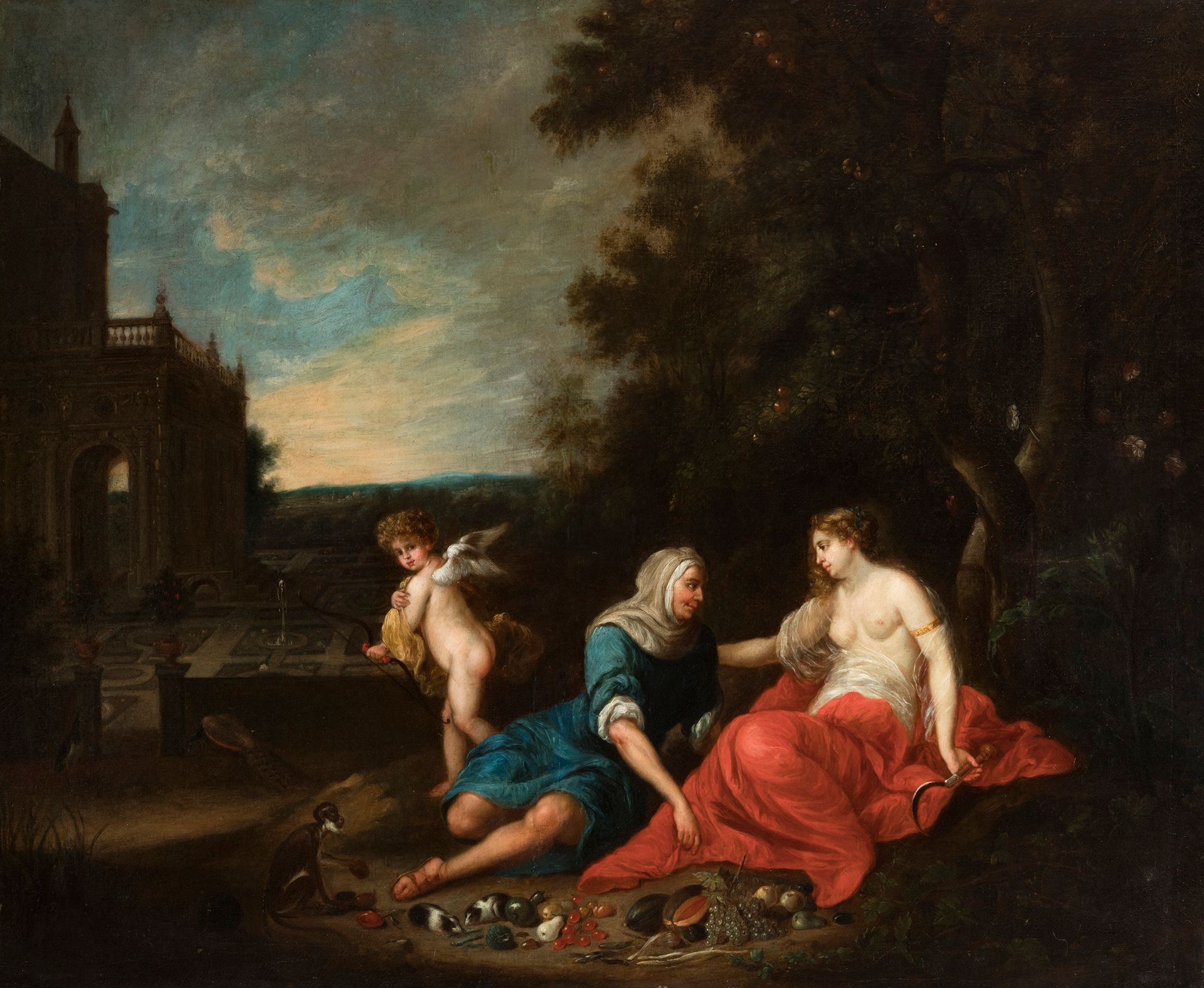Description
Flemish school, second half of the 17th century. "Allegory of Abundance". Oil on canvas. Re-lined Presents restorations and repainting. Size: 113 x 136 cm; 145 x 168 cm (frame). In this Flemish painting of the Baroque period, the mythological figures occupy an idyllic place, resolved with great scenographic sense. Venus is seated in a forest clearing next to a woman with her hair covered by a white veil. The humble woman points to the abundant fruits scattered at her feet that make up a juicy still life in which each fruit. Venus carries a sickle, an element linked to the harvesting of the field, and therefore to the fecundity of the earth. She herself, as the goddess of carnal love, reinforces the meaning of the painting. Animals are also imbued with semantic intention: the monkey, which usually symbolizes gluttony and lust in Flemish paintings, and guinea pigs or rabbits, for their known fertility. Flemish painters contemporary to the author of this painting, such as Brueghel, often introduced these animals in their allegories of abundance and the seasons. The lightness of Venus's drapery contrasts with the draped figure that accompanies her. A skillful work of glazes reproduces the fine gauze hanging from one of the plump arms of the goddess, whose carnal sensuality and silky hair reproduces a feminine canon close to the women of Rubens. The nude figure of Cupid, with his bow of accurate arrows, occupies the background. His kinky hair covers a head of soft cheeks and fleshy lips. A solemn palatial architecture is silhouetted against a twilight sky, and before it unfolds a garden of flowerbeds trimmed in perfect geometry, welcoming fountains and beautiful paths.
35
Flemish school, second half of the 17th century. "Allegory of Abundance". Oil on canvas. Re-lined Presents restorations and repainting. Size: 113 x 136 cm; 145 x 168 cm (frame). In this Flemish painting of the Baroque period, the mythological figures occupy an idyllic place, resolved with great scenographic sense. Venus is seated in a forest clearing next to a woman with her hair covered by a white veil. The humble woman points to the abundant fruits scattered at her feet that make up a juicy still life in which each fruit. Venus carries a sickle, an element linked to the harvesting of the field, and therefore to the fecundity of the earth. She herself, as the goddess of carnal love, reinforces the meaning of the painting. Animals are also imbued with semantic intention: the monkey, which usually symbolizes gluttony and lust in Flemish paintings, and guinea pigs or rabbits, for their known fertility. Flemish painters contemporary to the author of this painting, such as Brueghel, often introduced these animals in their allegories of abundance and the seasons. The lightness of Venus's drapery contrasts with the draped figure that accompanies her. A skillful work of glazes reproduces the fine gauze hanging from one of the plump arms of the goddess, whose carnal sensuality and silky hair reproduces a feminine canon close to the women of Rubens. The nude figure of Cupid, with his bow of accurate arrows, occupies the background. His kinky hair covers a head of soft cheeks and fleshy lips. A solemn palatial architecture is silhouetted against a twilight sky, and before it unfolds a garden of flowerbeds trimmed in perfect geometry, welcoming fountains and beautiful paths.
